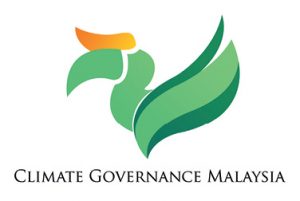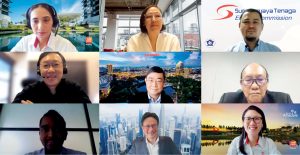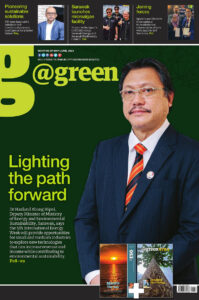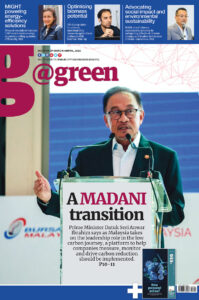Industry players come out with policy recommendations on climate action for government to consider
Private stakeholders have called for clear government policies on climate change to effectively play their part in achieving nett zero emissions by 2050.
Climate Governance Malaysia (CGM) and CEO Action Network (CAN) organised roundtable discussions involving the property and construction sector in July 2021 to address this issue.
The first session discussed the strategies for embodied carbon reduction in the built environment, while the second session focused on reducing operational carbon in the built environment.
In his welcome note, Dato’ Seri Johan Raslan, the founding member of CGM and the steering committee member of CAN stated that companies need clear and predictable government policies in effectively moving the industry forward on climate action.
The first roundtable discussion was held on July 12, 2021, moderated by
, the managing director of IEN consultants, a pioneering green building consultancy in Malaysia.
The first session participants were then engaged with insightful presentations from four panellists, namely Darshan Joshi, Ir M Ramuseren, Ir Yasotha Chetty and Dr Foo Chee Hung.
Carbon pricing as climate action toolkit
Darshan, an analyst from the Institute of Strategic and International Studies (ISIS) Malaysia, argued: “Carbon pricing is a fundamental enabling policy within the climate action toolkit.”
On carbon pricing rates, Darshan said: “The first best global policy would be a uniform global price on carbon.”
He said, for starters, countries could adopt prices that trend towards this global price of carbon.
“Get accustomed to functioning in the presence of carbon tax, and that’ll make any future shift to a global price, if it were to happen, any smoother,” said the analyst.
He also highlighted that the carbon price couldn’t be too high as it would be politically infeasible and cause economic harm. It couldn’t be too low as it would not incentivise decarbonisation.
GHG emissions in Malaysian construction industry
Ramuseren, general manager at Construction Industry Development Board (CIDB) Malaysia, then shared the study conducted by the organisation to estimate GHG emissions in the construction industry.
From the study, Ramuseren shared the average GHG emissions per year from the construction process in Malaysia was about 76 million tCO2eq, 90 per cent coming from manufacturing, three per cent from transportation and only seven per cent from the construction activities.
“If we don’t do anything, if the status quo remains, no change, no further action on new policies or incentives such as tax, you can expect in the next 30 years, in 2050, it’s going to increase to 92 per cent,” said Ramuseren.
According to the study, the embodied carbon would contribute to about 89 per cent of the total number.
The study also came out with recommendations on incentives and disincentives for the consideration of the Malaysian government. Some of the incentives are tax incentives for GHG reporting, low carbon funds and incentives for construction materials.
Meanwhile, the disincentives are carbon tax, mandatory GHG reporting, cap-and-trade system and mandating the use of low carbon building materials.
Structural engineer Yasotha, who is also the founder of OHR Engineering, shared that 38 per cent of global CO2 emissions came from the buildings industry, of which 26 per cent was embodied carbon.
“This is an average figure. Depending on the type of buildings, the value could vary from 30 to 70 per cent.”
She elaborated that Malaysia consumed 21.65 megatons of cement in 2016, which produced 19.5 MTCO2Eq, almost 10 per cent of Malaysia’s carbon emissions.
Yasotha then laid out some considerations for reducing embodied carbon impacts of structural building materials, such as reusing materials, selecting lower embodied carbon and adopting leaner designs.
Challenges in IBS adoption
Foo, a professional technologist who is also a manager at MKH Berhad, shared that developers faced some challenges in reducing the embodied carbon.
Developers need to consider regulatory compliance, consumers’ perception and acceptance level, and cost in using alternative building materials. In addition, there were also some issues of inefficient Industrialised Building System (IBS) ecosystem and mismatch of incentives.
He shared developers were not keen on using IBS because of the cost issues. Until this was fixed, developers would continue to opt for conventional construction.
He then recommended that policymakers revise building code and bylaws
and introduce tax deduction and non-monetary incentives for projects with an IBS score of more than 70.
EE initiatives to reduce operational carbon
The second roundtable discussion then convened on July 16, 2021. The session was moderated by Ar Serina Hijjas, the Vice President of Malaysia Green Building Council (MGBC). It featured four panellists — Zulkiflee Umar, Ar Zulkifli Zahari, Davis Chong and Ong Pang Yen.
As mentioned in the first roundtable discussion, the building and construction sector is responsible for 38 per cent of global carbon emissions. The 28 per cent comes from operational carbon whilst 10 per cent comes from embodied carbon.
“Covering 28 per cent of this operational carbon is energy efficiency (EE) and renewable energy (RE),” said Serena.

She shared that in reducing carbon emissions of buildings, the way forward was to lower the energy first and then add renewable energy.
Zulkiflee from Energy Commission Malaysia shared some EE initiatives in Malaysia. The first one was the Efficient Management of Electrical Energy Regulations (EMEER) 2008. He stated that 1,500 out of 25,000 industrial installations were subjected to EMEER 2008, consuming about 80 per cent of total industry consumption.
“In terms of number, it is low. In terms of consumption, it is very high,” Zulkiflee commented.
He then shared another EE initiative, the Minimum Energy Performance Standard (MEPS), used to regulate the energy efficiency of some electrical appliances.
Aside from the two regulations was the National Energy Efficiency Action Plan (NEEAP) 2016-2025. There were four strategic thrusts under this policy: to implement EE plan, strengthen institutional framework & capacity development, establish sustainable funding mechanisms, and promote private sector investment in EE initiatives.
“We’re currently in the process of drafting a new Energy Efficiency and Conservation (EE&C) Act in Malaysia, which will include electricity and thermal,” said Zulkifli, an architect who is also the president of Malaysia Association of Energy Service Companies (MAESCO).
“The number of registered energy managers is almost 1,500, but the truth is only about 30 per cent are practising.
“And after 12 years of the EE regulations, there’s only 60 per cent of compliance may be due to the difficulty of enforcement.”
Zulkifli then shared about the general EE strategies for new buildings, consisting of the mandatory adoption of MS1525 or a selected Green Building Rating Tool, financial and tax incentives, enhancement of capacity building, public awareness programmes and awards and recognition.
He said the same strategies applied to the existing buildings with the additional plans, such as introducing the availability of high-performance EE technology to the building owners and boosting the quality of EE retrofits.
Zulkifli shared three components that MAESCO wanted to promote in the country were building EE policies, promoting of business models and finance mechanism. He also highlighted the need for a dedicated energy efficiency regulation in the building sector.
“The most important thing that we need to emphasise now is to establish the EE&C Act. It has been years overdue.
“Hopefully, there will be a liberalisation of this energy supply sector,” said Zulkifli.
Carbon neutrality by 2050
In increasing RE adoption, Chong, the president of Malaysian Photovoltaic Industry Association (MPIA), said: “We do Feed-in tariff (Fit), Large Scale Solar (LSS), Nett Energy Metering (NEM) and Self-consumption programme (SELCO).”
He said Malaysia could catch up with more advanced countries in terms of RE adoption with existing policies. Chong mentioned some challenges to the acceleration of RE adoption in Malaysia, which included the limitation of the TNB grid, the government’s restrictions regarding solar installation, and the costly energy storage.
Ong, the executive director of Sunway Group, then spoke about carbon neutrality in terms of township infrastructure. Ong said there were three ways to help to reduce the dangerous situation of accumulated carbon intensity: reduction, substitution, and sequestration of CO2.
“Number one is to reduce carbon emission. The second way is to substitute the dirtier energy source with a cleaner energy source. You will also need to have carbon capture and sequestration of CO2,” said the director.
In Sunway City, these three mentioned approaches were made by providing walkways, adopting solar panels on elevated walkways and buildings, and planting more trees. — @green









